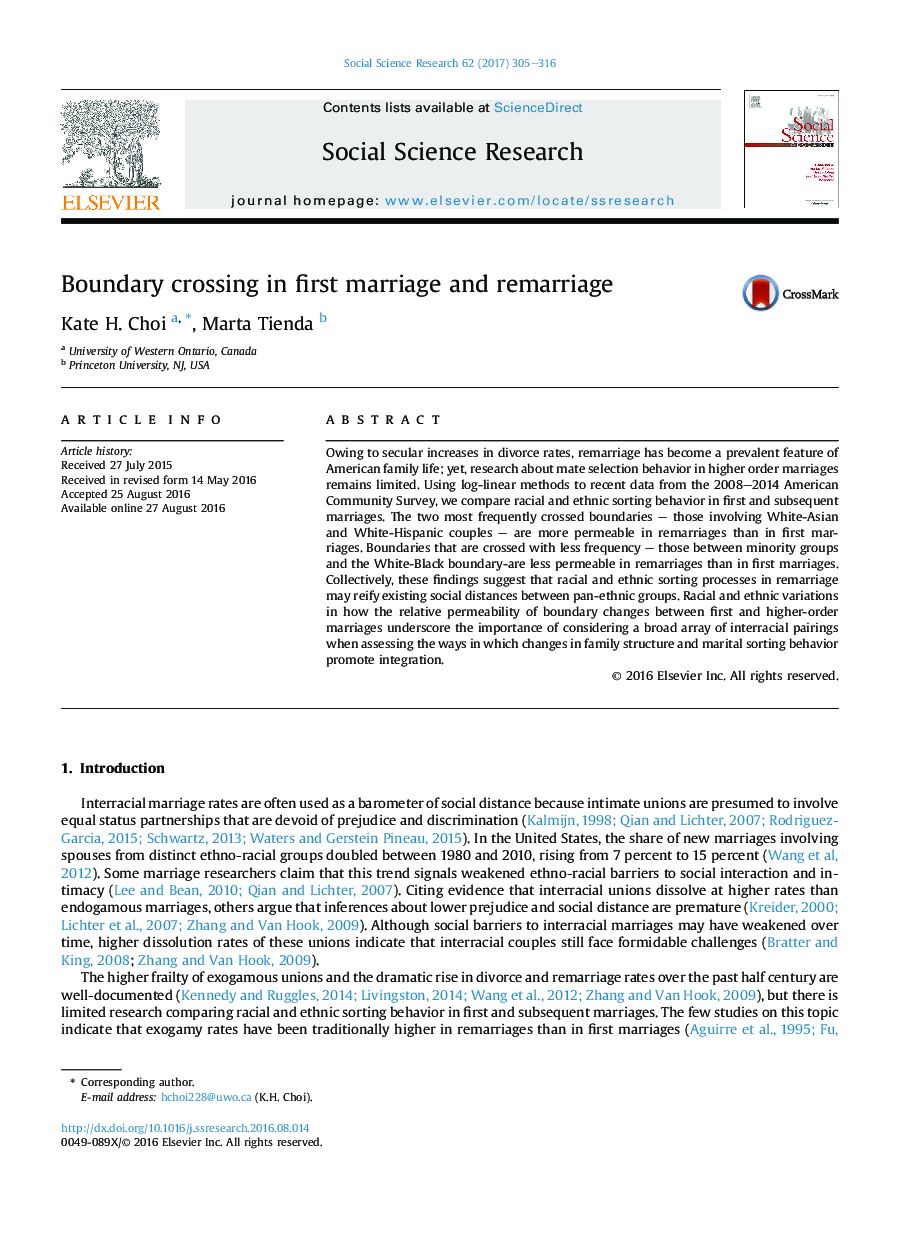| Article ID | Journal | Published Year | Pages | File Type |
|---|---|---|---|---|
| 5047049 | Social Science Research | 2017 | 12 Pages |
â¢We compare intermarriage behavior in first and subsequent marriages.â¢White-Hispanic and White-Asian boundary are more permeable in remarriage than in first marriage.â¢Boundaries between minorities are more rigid in remarriage than in first marriage.â¢White-Black boundary is more rigid in remarriage than in first marriage.
Owing to secular increases in divorce rates, remarriage has become a prevalent feature of American family life; yet, research about mate selection behavior in higher order marriages remains limited. Using log-linear methods to recent data from the 2008-2014 American Community Survey, we compare racial and ethnic sorting behavior in first and subsequent marriages. The two most frequently crossed boundaries - those involving White-Asian and White-Hispanic couples - are more permeable in remarriages than in first marriages. Boundaries that are crossed with less frequency - those between minority groups and the White-Black boundary-are less permeable in remarriages than in first marriages. Collectively, these findings suggest that racial and ethnic sorting processes in remarriage may reify existing social distances between pan-ethnic groups. Racial and ethnic variations in how the relative permeability of boundary changes between first and higher-order marriages underscore the importance of considering a broad array of interracial pairings when assessing the ways in which changes in family structure and marital sorting behavior promote integration.
